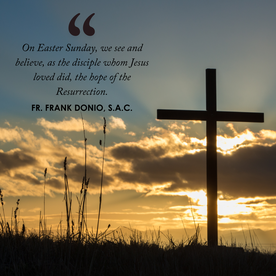 The time of the Paschal Triduum and the Easter season are almost upon us. How has the time of Lent been? It is meant to be one of ongoing conversion to Christ – metanoia. The Triduum offers us a deeper time of conversion. The Gospel readings of those days give us much to reflect on our own discipleship of Christ. On Holy Thursday, during the Mass of the Lord’s Supper, we experience table fellowship, the first Eucharist, and the witness of Christ in service to his Apostles through the washing of the feet. It is an example that we are called to follow. During the Commemoration of the Passion of Our Lord Jesus Christ, we hear of the betrayal of Judas, the denial by Peter, the suffering of Jesus, and the grief of those at the foot of the Cross, especially the Blessed Virgin Mary. In what occurs, we consider the ways in which we have not lived for Christ and how we can unite our suffering to his on the Cross. At the Easter Vigil, in the announcement of the angel to Mary Magdalene and the women at the tomb, we learn about the possibility of eternal life given to us all through the Risen Christ. On Easter Sunday, we see and believe, as the disciple whom Jesus loved did, the hope of the Resurrection. In this hope, we proclaim the Risen Christ as Savior of the world! Metanoia, ongoing conversion, is a patient journey that leads to our true joy, deeper encounter with the Risen Christ! May the charity of Christ urge us on! May you have a blessed Paschal Triduum and a joyous Easter! In God, the Infinite Love, Fr. Frank
0 Comments
When the COVID-19 pandemic began and so much seemed outside of my control, I turned to prayer as a source of comfort, nourishment, and stability. Favorite Catholic podcasts, powerful homilies, Gospel-inspired music, Scripture reading, and devotions like the Rosary kept me grounded in a higher reality than the confusing, dark, and humbling one I faced. Perhaps I felt the need to overcompensate in a time when I couldn’t physically receive the Eucharist. The lack of physical Communion meant I searched for spiritual, mental, and emotional communion with the Lord in other ways I found fruitful. In this way, times of trial can bear much fruit—suffering sharpens our eyes to the eternal and true. It is sobering. Surrendered to God, suffering can be the most direct path of conversion and redemption. As the pandemic continued and I was able to adjust to my new “normal,” my sense of emergency slowly began to fade. I found ways to be comfortable and to continue meeting needs like friendship, worship, and rest. No, everything was not as it had been. Life was still a shadow of its former glory. And yet, I had found ways to cope. As this trajectory continues with the reopening of society in many ways, I have begrudgingly found that my deep prayer life has slowly faded. Becoming more of a checklist than a time of renewal, my prayer time is filled with distraction and noise. I’ve come to realize that I would rather fill my time with the noise—albeit good noise—of a Catholic podcast or homily instead of turning everything off and filling my time with God Himself. I’m more comfortable hearing others talk about God and their spiritual insights than talking to God. I’m also more comfortable talking AT God than WITH Him. I have a lot to say, but am not spending time listening or receiving. Finally, once I do settle down to pray, my tasks, chores, and rambling thoughts bombard me. My prayer time is filled with noise and distraction. Why is it easier for me to scroll through a newsfeed of beautiful images and consumer goods than to thumb through my Rosary meditatively? Why is it easier to respond at all moments to the latest texts in a never-ending group thread than it is to respond at all moments to the promptings of the Holy Spirit? Why is my heart more easily captured by the words of the media than by the Word of God? For perhaps the millionth time, I must face again a thorn in my side that prevents me from greater holiness: noise. “Noise, the grand dynamism, the audible expression of all that is exultant, ruthless, and virile—Noise which alone defends us from silly qualms, despairing scruples, and impossible desires,” says the demon Screwtape in C.S. Lewis’ classic, The Screwtape Letters. He continues, “We will make the whole universe a noise in the end. We have already made great strides in this direction as regards the Earth. The melodies and silences of Heaven will be shouted down in the end.” Lately in my life, it seems like Screwtape and his friends are succeeding. I’m having trouble hearing the melodies of Heaven amidst all the noise. And can’t we all admit to knowing this deep down—that much of our lives is an endless stream of noise and distraction threatening to drown out the still small voice inside? I reflect on these things once again while reading a powerful book and meeting virtually with other women--This Present Paradise: A Spiritual Journey with St. Elizabeth of the Trinity. Elizabeth, through the author Claire Dwyer, is shaking me from my complacency and passing through the distractions to help resurrect my heart. This young French Carmelite nun who lived over a hundred years ago mastered the interior life of prayer and encourages all to do the same—regardless of their vocation in life. I know I am called to more than what I’m filling myself up with; an hour of scrolling through items on sale or watching a home renovation show will never compare to fifteen minutes of virtual Adoration or a few decades of the Rosary. Any time consecrated to God is not returned unsanctified. In times of greater stability, comfort, or complacency, I’m also reminded of the Scripture passage about the wise virgins at the gate. We are called to fill our lanterns with oil as we await the Bridegroom so that we will be prepped and ready for His return. I have personally found that my preference for news feeds, shows, or internet browsing fills my lantern with something akin to water rather than oil, and so I am using this season of Ordinary Time to recommit to a quieter, more fruitful prayer life. Below are a few things I have found helpful for overcoming spiritual distraction and ensuring daily prayer:
As the world continues to reopen in ways that give us hope, I invite you to reflect on your prayer life throughout the pandemic months and set goals for yourself during this season of Ordinary Time. In the end, may we find that the melodies and silences of Heaven triumph over the noise of the world. I recently learned that a medical condition (that I have suffered from for most of my life) might be greatly improved or even completely healed via a major diet overhaul. Although I may one day be able to reintroduce some foods back into my diet, it is difficult for me to face giving up many of my favorite foods for several months, years, or even forever.
On reflecting and praying about my reluctance and fear about this daunting task, I realized that my personal struggle with my physical health is analogous to the human soul’s struggle with concupiscence and sinfulness. My body has been growing progressively sicker over nearly two decades, with symptoms that none of my previous doctors had been able to explain. But I have been so sick for so long that there were times (usually in between the worst flare ups) that I convinced myself everything was manageable, or even that it was all totally fine and normal. But during the worst flare ups—whose pain or duration I could never anticipate and for which I never had any warning—I would be in so much pain that I could sometimes barely function. In a similar way, mankind clings to sin. Why do we hesitate to put aside the things that keep us from God? Why is it so hard for us to simply reject our sins and turn to a deeper relationship with our loving Creator? Like me with my medical condition, I think we can become so used to our vices—to how it feels for our souls to be sick from repetitive sins—that we convince ourselves that turning back to God and casting aside our sinful habits is too difficult and would not make us any more joyful or free. Choosing the healthier or holier life is difficult. Establishing good habits always seems to take more effort than establishing or sliding back into bad ones. Of course, it does not help that temptations abound in the temporal world; inflammatory foods are the easiest and cheapest things at the grocery store and are laced throughout restaurant menus. Likewise with temptations to sin: the ubiquity of screens and social media, which can create barriers to personal relationships and wipe out our daily prayer times; the constant push to place religious devotion with devotion to ‘things’, the pressure to ignore the natural moral order in favor of the self and the self’s pleasures. Because we are a fallen race, we often seem incapable of rejecting short-term pleasure in favor of long-term gain. I know my health will drastically improve if I permanently remove the inflammation-triggering causes from my life, but somehow the very process—the sacrifice itself and the initial withdrawal I will surely feel as I miss that old diet—seems like too much to bear. How can I ever survive without donuts after Mass sometimes? How can I possibly stop eating cheese? Maybe I can just take a pill instead and keep on living my life how I want to. It’s like this with our vices, too: How can I give up this behavior or this selfishness that is rooted in my heart? I know I should put down my phone and pray, but I’ll do that in five minutes (or thirty, or sixty). There isn’t really any need to change my lifestyle to be a stronger follower of Christ, is there? And besides, wouldn’t my hundreds of Instagram followers miss me if I stop posting photos five times a day? Entering into a deeper relationship with God demands radical changes of us. I eventually realized that my physical health is also tied to my spiritual health. God gave me this unique body, fearfully and wonderfully made in His own image, and it is my responsibility to care for that gift by treating it well—by seeking to heal it in the ways that are available to me and to which God has slowly led me over the past ten years. If I know that my soul is sick—and that more stuff, more screen time, and more licentiousness are not going to heal me—should I not put my sinfulness or woundedness into the hands of the God who will heal me? Maybe it will take years for my body to heal. Maybe there are some things that I will never eat again, while others I will be able to tolerate on occasion or even fully reincorporate into my daily diet. But, in physical as well as spiritual health, I won’t ever find out what it feels like to be healed unless I commit to getting rid of the things that are holding me back. Beauty transformed my soul—waking it up from the depths of hibernation and shaking loose the layers of grief, bitterness, and resentment which had grown over time. My heart could not resist the lure of cobblestone streets, golden light cascading down narrow alleyways, or the shadows of the towering cathedral. I felt alive during those months abroad in a way I had hardly known was possible. Afternoon jogs on an ancient Roman bridge. Secret courtyards and hidden gardens overlooking the city. Tucked-away alcoves and incense emanating from ancient chapels. A croissant shop with an expansive menu that dared me to try them all. I did, by the way, try them all. I had goals like that while I was studying abroad. For the first time in many years, the over-achiever A-student was not living for grades and recognition. She was living for experience, for delight, for beauty. And in this was a newfound freedom. I remember sitting in the cavernous cathedral of Salamanca for long stretches between classes breathing in the music that played softly between services and basking in the magnanimous splendor. Moments like this made me long for something outside and above myself, though I could not precisely say what or why. Only later would I come realize it was the Bridegroom Nicholas Cabasilas writes of in “The Life in Christ” calling me to glimpse the eternal I was created for. Cabasilas explains, “When men have a longing so great that it surpasses human nature and eagerly desire and are able to accomplish things beyond human thought, it is the Bridegroom who has smitten them with this longing. It is he who has sent a ray of his beauty into their eyes. The greatness of the wound already shows the arrow which has struck home, the longing indicates who has inflicted the wound." Beauty wounded me that semester in a delightful way. It awakened my heart with a longing to reach for what transcends human experience: the eternal. My experience living abroad enabled me to delight in creation and life in a way people seldom do or ever get the chance to. And this knowledge humbled me profoundly. “I do not deserve this,” I thought many times throughout my studies abroad. What had I done to earn the experience of such majesty? The short answer: nothing. It was sheer, unmerited gift. I knew almost immediately who the gift givers were. First: my parents, who had spent their lives providing for their children and modeling servant leadership and sacrificial love. It was because of them and their contributions to my education that I was able to study abroad in the first place. The other gift giver: God himself—the author of beauty. It was in this way that God revealed himself to me personally and began to bring me back to himself. The famous line from Dostoevesky, “Beauty will save the world” started for me that fall in Spain. Beauty saved me. God, beauty itself, the author of beauty, created us with a desire to grasp at and experience beauty in order to draw us closer to himself. Beauty is sheer gift—unnecessary by logical standards and not necessarily functional or efficient. It does more than just appeal to our senses: it awakens our soul. It is meant to draw us outside of ourselves with what Cardinal Ratzinger at the time called a “longing for the Ineffable, [a] readiness for sacrifice, [and lead to] the abandonment of self.” Furthermore, “Beauty does not end with us or with our experience, but calls us outward on mission. Artistic beauty provokes interior emotion, it silently arouses astonishment and leads to an ‘exit from self’, an ecstasy” (Pontifical Council for Culture, Plenary Assembly Final Document-The Way of Beauty. section III.2, The Beauty of the Arts). This was my experience exactly. I came home a different person—one overflowing with gratitude and humility. It manifested in frequent phone calls to my family, much to their concern. The formerly independent, cold, aloof daughter was calling her parents each week to say thank you and to check in. After ascertaining that my mental health was still sound, my mother offered wise advice to her daughter now bubbling with gratitude: spend 5 to ten minutes a day thanking God. Beauty was, therefore, God’s entry point into my heart. As a result, I turned back to him in praise and thanksgiving. My friends and family noticed the transformation, the newfound peace that overflowed, the eyes now on the lookout for glimpses of the Creator hidden among his creation. Beauty resulted in action—slow and gradual, but intentional in my remaining college years. I entered the Campus Ministry office for the first time upon my return stateside. I began making use of the Sacrament of Reconciliation weekly and sitting in the beautiful mission church of my alma mater for daily Mass. I attended retreats, began participating in service opportunities, and mentored younger students. Beauty drew me outside of myself and into the other—I had received an unmerited gift and wanted to reciprocate the giving. As Bishop James D. Conley said at an apologetics conference, “When we begin with beauty, this can then lead to a desire to want to know the truth of the thing that is drawing us, a desire to participate in it. And then the truth can inspire us to do the good, to strive after virtue.” Almost a decade later, as a mother of small boys, often limited to the sphere of my domestic church, how and where can I experience beauty? How can each of us, in whatever vocation we find ourselves in, find and experience beauty? After a year in which sin, division, sickness, and isolation threatened to obscure the beauty of life and our world, I believe we are called to reclaim this truth and open our eyes to the beauty and wonder of God once again. Beauty is not reserved for a special place or time, but can be found all around us: in the newborn’s first cry, the child’s wonder, the cicada’s song, the family dinner, the work done well, the priest’s sacrifice, the nun’s contemplative prayer, the humor of a colleague, the glowing of the stars, the dawn of a new day. Let us allow ourselves to believe and hope in the glimmers of beauty all around us that reveal a greater beauty we are called to. Let us strive to make the world more beautiful with our kind words and gestures, deeds done with love, hope, and joy, with the way we relish life as a gift and inspire laughter, with the way we live our lives authentically—in such a way that others are drawn to the joy of our Gospel message. Why? So that the world can see and come to know him. The ultimate purpose of beauty is redemption—knowing and experiencing Christ himself. The then-Cardinal Ratzinger put it so well, “We must learn to see him. If we know him, not only in words, but if we are struck by the arrow of his paradoxical beauty, then we will truly know him, and know him not only because we have heard others speak about him. Then we will have found the beauty of Truth, of the Truth that redeems. Nothing can bring us into close contact with the beauty of Christ himself other than the world of beauty created by faith and light that shines out from the faces of the saints, through whom his own light becomes visible.” Lent is not a diet program. Yes, the Church recommends the ascetical practices of prayer, fasting, and almsgiving. These, though, are meant to help us love God and neighbor more fully. Pope Francis in his homily for Ash Wednesday offered this consideration: “Lent is a journey that involves our whole life, our entire being. It is a time to reconsider the path we are taking, to find the route that leads us home and to rediscover our profound relationship with God, on whom everything depends. Lent is not just about the little sacrifices we make, but about discerning where our hearts are directed. This is the core of Lent: asking where our hearts are directed.” Where is your heart directed? Is it a divided heart? It is easy to compartmentalize. Or so it seems. Eventually, trying to live life in two directions tears us apart. “Our entire being” needs to be engaged, not simply part. We can pray, fast, and do almsgiving, but still be unconverted within. These acts are a means to an end, not an end in themselves. These “little sacrifices” should sharpen our minds and open our hearts more fully to a life directed toward God and neighbor. If they are done simply for us to feel a sense of accomplishment or as a test of our will, then their focus becomes about us. How do we go forward? By realizing that “everything depends” on God, not on us. Once we do, and cooperate more fully with the grace of Christ, our hearts will be undivided, united in love with God and neighbor. May the charity of Christ urge us on! For more resources to accompany you during your Lenten journey, please click here.
As someone who has always looked forward to the next challenge or opportunity both personally and professionally, I haven’t been very skilled at pausing and reflecting on the past. Writing this passage challenged me to settle myself enough to reflect on my journey as a Catholic father, and for that I am thankful as it contains many opportunities for me to continue to grow as both a Catholic and a father. My journey as a Catholic father is closely intertwined with my Catholic faith. My mother was a practicing Catholic and was always engaged in parish life. She also was a Catholic school teacher for many years. As a result, my sister and I were raised Catholic. In my case, this included attending Catholic school during my primary years and attending a Catholic university. I, like many other young Catholics, made my way to becoming an adult in the Catholic Church through Confirmation. While residing at home led by my mother, my sister and I were actively involved in our local parish. My first set of real-life religious decisions came when I went away to college at the University of Notre Dame. At this point, my religion did not feel like it was my own. It felt like it was my mother’s religion and my connection to it was not as clear. During my years at Notre Dame, a campus with over 150 venues in which to pray or attend Mass, somehow I managed to not regularly attend Mass. During my college years, I met my wife of now 32 years. She, like my mother, was an active Catholic who felt sure of her connection to her faith. During our early years of marriage, while she strongly modeled the Catholic faith with regular Mass attendance and engagement in parish life, I once again managed to get by with a part-time Catholic mentality while still searching for how Catholicism would be “my faith” rather than my mother’s or my spouse’s. But my wife and my mother were role models who kept me close to the Catholic Church during this period of uncertainty and questioning. After being married for just over 3 years, my wife and I conceived our first child. After she was born, we immediately began preparations for our daughter’s first step into the Catholic faith with the sacrament of Baptism. During this process, I had a real awakening: many of the questions I had been asking regarding my faith suddenly seemed selfish and self-serving. Although I felt I was prepared to be a father, I felt helpless in many ways to control the events that would impact my daughter throughout her life. It became clear to me that our daughter, and a few years later our son, would certainly need the love and support of their parents. However, they would also need something more—something that would sustain and anchor them throughout their lives regardless of the circumstance or challenge. This was faith, the Catholic faith. Not only would our children need this faith, but so would I. The blessing of fatherhood for me came with many gifts. My Catholic faith had become planted in some very good soil and, as a result of my fatherhood, began to grow. As our children grew up and became adults, my journeying with them as a father, husband, Catholic, and business leader has had its challenges. There was always an endless stream of competing day to day priorities. It was disappointing when, despite all our best efforts to keep all the balls in the air, inevitably some would drop. Reflecting back, it was being present at those moments that gave my fatherhood and faith deeper meaning—when our children wanted to reach out for support, advice, a kind ear, or just to talk about their journey through both life and faith. In some cases, my children might not see the connection between their life journey and their faith journey, as I certainly didn’t a number of years ago. This provides a great opportunity as a father to create these connections for my children as they become full participants in our society and ultimately leaders in their communities, parishes, and professional lives. Having grown in my faith throughout my vocation as a father, I hope that I can be for my children the same role model of a loving, thriving Catholic faith that my mother presented to me. During our marriage preparation, my husband and I made a mission, vision, and values spreadsheet for our marriage goals (nerdy, we know!). Part of our goals include living an authentic Catholic lifestyle, which we believe integrates the liturgical season into our new family unit. Some of my favorite memories from childhood include cooking and baking with my mom and having meaningful discussions with my parents about our Catholic faith. Traditions like these are important to my husband and me, and we look forward to continuing to build off of our parents’ traditions while adding our own. To build traditions within our family, we’ve started with the idea of liturgical living. Liturgical living brings the life and breadth of the Church into our own homes and can be accomplished through certain prayers, celebrations, meals, crafts, and other traditions. This can also be described as building up the domestic church – which may be even more important than ever during the Covid-19 pandemic. As newlyweds, we have slowly added liturgical season traditions into our daily lives, such as celebrating saint feast days and preparing our house for Advent and Christmas. A New Year’s resolution we’ve set for ourselves in 2021 is trying to incorporate more of the Church’s liturgical seasons into our home to better appreciate the richness of our Catholic faith. One of our favorite wedding gifts to help us implement our goal of liturgical living is The Catholic All Year Compendium by Kendra Tierney. Tierney shares how her family celebrates the Church’s liturgical season 365 days a year. She starts off the book by encouraging families to begin celebrating what makes the Catholic faith most approachable to each family member – saint namesake feast days and Baptism anniversaries. Special meals and desserts, prayer, stories, activities, and conversations are different ways to make the celebrations meaningful. After noting namesake feast days and baptisms, Tierney recommends starting slowly and gradually, adding in other feast days important to each family and doing things that already fit into existing daily routines. The free calendars given out at church for the new year have these dates with the liturgical year, such as Ordinary Time, Lent, etc. A fabulous Christmas present I also received last month is the Blessed Is She planner that incorporates feast days and the liturgical year. This is all a process that takes time and can be added upon each year or changed. It shouldn’t be meant to overwhelm. In our annual family planning meeting for 2021, my husband and I went through each month and picked which feasts we’d celebrate after our saint name days and baptisms. Our church even made our first feast day celebration easy by providing us blessed chalk and a prayer to say while marking 20 + C + M + B + 21 above our front door mantle for Epiphany on January 6! We’ve also added making “king cake” cinnamon rolls for dessert as part of the tradition. How do you plan to incorporate Catholic liturgical living into your family’s routine this year? What are some of your favorite liturgical living traditions? If you practice liturgical living already, how has this helped your family learn about the Catholic faith? For more resources on Marriage and Family, please click here. January 1, Catholics celebrate the Solemnity of Mary, Mother of God, one of the holy days of obligation in the Church. This celebration is a special way to celebrate Mary’s special role in God’s plan in the Christmas story, as well as a way to start the year full of grace, ready to tackle those New Year’s resolutions. Although the practice of New Year’s resolutions is not distinctly Christian, our resolutions gain a new significance when we attend to Mary’s story. Discern Your Resolutions The story of Mary’s call to motherhood is a paradigm of Biblical discernment. When Mary received Gabriel’s announcement, “She was greatly troubled at what was said and pondered what sort of greeting this might be” (Luke 1:29). In faith, Mary wrestles with God’s calling. Even after her great “Yes,” and giving birth, “Mary kept all these things, reflecting on them in her heart” (Luke 2:19), revealing she is still learning what her vocation means and how to live it. What’s this got to do with New Year’s resolutions? Discernment is a spiritual, prayerful decision-making process between possible courses of action. What specific habits or practices is God calling you to work on this year? There are plenty of worthwhile resolutions—there’s a million things I need work on—but it’s just not all possible to accomplish in a year, or ever. Prioritize resolutions that strengthen your personal vocation. Expect Without Expectations Mary’s faith is “expectant” but without “expectations.” In other words, Mary expects God to act in her life, but doesn’t place limitations on who, what, when, and where. Mary trusts the angel Gabriel’s words, “nothing will be impossible for God” and is free to live and say, “May it be done to me according to your word” (Luke 1:37-38). Maybe God will bring about the outcomes of your resolution through unexpected ways or people. That’s the way it often works in scripture and the lives of the Saints. When you give God permission to act on his terms, you are free to boldly expect that God will do new and great things in your life this year. Make Room For Others Even free from original sin, God uses other people to accomplish his plan in Mary’s life. Mary’s story was made possible through her reliance upon truthful friends and family. Her cousin Elizabeth speaks truth and hope into her situation (Luke 1:42), and her husband Joseph goes to heroic lengths to let God’s call come to fruition. Share your resolution with someone you trust. Whether it’s a major lifestyle change or not, ask them to keep you accountable, and always with prayer. Accountability also prevents goals from becoming purely self-centered or even idols from seeking God first (e.g., just to impress people at the beach). No one can accomplish your resolution for you, but you can find people to accomplish it with you. Resolve to Live the Truth Mary shows the true path by always making everything about Jesus. “Do whatever He tells you” (John 2:5). A true personal change will always lead us to more fully reflect our true identities as sons and daughters created in the image and likeness of God. But the truth is, sometimes resolutions are born of self-loathing or lies we’ve bought instead of the desire to more fully reflect God’s truth. This often happens with body or image-related resolutions; to be thinner, smarter, stronger, etc. While these aren’t de facto bad things, the tendency becomes seeking physical solutions for a spiritual or psychological wound that really needs healing. That’s why discernment with spiritual direction and honest accountability is vital. Exercise programs or supplements say we should consult a physician first- but it’s also true when it applies to spiritual exercises for our soul! Mary and the saints save us from spiritual self-medication, which close us off from the Divine Physician. I was born in Arlington, Virginia and my family is from El Salvador. I grew up being bi-cultural, speaking Spanish to communicate with my immediate family and English to communicate with everyone else. I remember while growing up that my peers at school would be surprised when I would speak Spanish because they thought I didn’t know the language. Going to church, my family would always go to Mass or Eucharistic Adoration in Spanish. I almost had two different lives: one was in Spanish and the other was in English. Each language incorporated different things.
During the summer I was fifteen, I attended my first teen retreat by Tira La Red (Throw the Net), where I had my first encounter with God. I remember that most talks were in English and everything that came down to praying was in Spanish. This made me feel comfortable and that I truly fit in since I and the other participants only knew our prayers in Spanish. I enjoyed attending the bilingual retreat; it made me feel like I belonged. I left this retreat and was inspired to grow as a Catholic—my religion and faith became a very big part of my life. While attending public school, I observed that religion was rarely discussed unless Christianity came up in history class. Being Catholic and being able to identify as Catholic was important to me, so most of my high school friends knew about my devotion to the faith. Many of them did not understand why I was so devoted but respected that I was, and that inspired them to want to know more about my faith. Many times, we did not see eye to eye on different Catholic teachings or perspectives, but my friends were able to see past that and we maintained a deep friendship regardless of our beliefs. I would go to my youth group at my parish and attend Tira La Red events during the weekends. My weekends were consumed by Mass and church events which left me feeling fulfilled. Once I graduated high school, I wanted to attend a Catholic college, which led me to attend The Catholic University of America. I was excited to go to a school where I would continue to grow in my faith and learn more about it while also majoring in marketing (I always knew I wanted to specialize in something in business). Once at Catholic University, I realized that my experience of bicultural Catholicism was not the reality for everyone else. I realized that the way I practiced and experienced the Catholic faith would be different in college. There were no bilingual events, which was challenging at the beginning. Eventually I realized that this challenge was an eye opener for me to stop seeing my faith only in terms of what language was being used to discuss it. Whether it was in Spanish, English, or both, it’s all my same faith. Many wonderful things came from attending Catholic University. I had the opportunity to make friends who also practiced my faith, was able to attend Mass, and share deep conversations that were important and enriching. During orientation week, I remember attending my first English Mass. It was all new to me, but I began to see my faith in a different way and also got to appreciate my unique perspective. I learned that no matter what language we speak or culture we come from, we find God when we seek him in whatever language we’re comfortable with. This diversity is what strengthens and enriches the Catholic faith. After working for two years at the Catholic Apostolate Center, I have not only celebrated and learned more about my faith in English, but have also had the opportunity to do things that involve being bicultural. I have been able to expand my horizons and see my faith in so many different wonderful ways that I was blind to before. I have come to see that religion does not need to be practiced in Spanish or have both languages in it in order to represent my faith. Before attending The Catholic University of America, I did not understand and value the Catholic faith for what it is and for the diversity that it brings. The Word of God is for all, not just for one culture or ethnicity. Having attended a Catholic college and now working for a Catholic organization, I have learned how unique it is that I get to know both English and Spanish and how I can enjoy practicing my faith in either language or both in my everyday life. I have also accepted that no matter what language I choose or prefer to speak, I am one and so is my faith. What image comes to mind when you hear the word conversion? To many, the words of those who encountered Jesus in his earthly ministry may come to mind. Conversion may sound like the cry of the Samaritan woman in John’s Gospel: “Come and see a man who told me everything I have done. Could he possibly be the Messiah?” (John 4:29). Perhaps Caravaggio’s The Conversion on the Way to Damascus rises to the surface, an expression of a dramatic scene illustrated with a few artistic liberties. Still, we may associate conversion with a story like St. Augustine: a turning from a former life of debauchery or sin to a life lived in pursuit of God. Because of the art that is important to our faith, cultures, and families, we may assume conversion to be a dramatic, “lightning-bolt” moment: brief, intense, supernatural, and immediately transformative. While our tradition does speak of the reality of dramatic conversions, conversion itself is often more gradual and organic. For those of us whose lives have not yet become hagiography, what does conversion look like? More particularly, what does conversion look like for us in this particular moment, in our current context of history and life? First of all, what is conversion? Conversion, according to the Catechism of the Catholic Church, is “a radical reorientation of our whole life, a return, a conversion to God with all our heart, an end of sin, a turning away from evil, with repugnance toward the evil actions we have committed. At the same time it entails the desire and resolution to change one's life, with hope in God's mercy and trust in the help of his grace” (CCC, #1431). It is “first of all a work of the grace of God who makes our hearts return to him,” and is not “aim[ed] first at outward works, ‘sackcloth and ashes,’ fasting and mortification, but at the conversion of the heart, interior conversion” (CCC #1432 and #1430). In other words, conversion is a movement away from sin, a re-ordering of priorities with Christ re-categorized as the center of our lives. It is something that occurs through supernatural grace and the initiative of the Holy Spirit, first changing our hearts and minds, but through our cooperation, manifests itself in everyday actions or “visible signs” (CCC #1430). The process of conversion, for most of us, is not instantaneous; rather, it usually a slow, gradual process that involves daily recommitment and practice. In a 2017 audience, Pope Francis reflected on the gradualness of conversion this way: “Avoiding evil and learning to do good: this is the rule of conversion. Because being converted doesn’t come from a fairy who converts us with a magic wand: No! It’s a journey. It’s a journey of avoiding and of learning.” As Pope Francis highlights, conversion can be as simple as learning something new. It involves openness to re-orienting our priorities, changing our opinions, reconsidering our worldview, and engaging with the truth. However, the gradual process of conversion doesn’t start and end with us; it is always oriented towards the building up of humanity and being brought more deeply into right relationship with God and one another. Conversion always has a social and relational impact. As the Catechism of the Catholic Church notes, “Conversion is accomplished in daily life by gestures of reconciliation, concern for the poor, the exercise and defense of justice and right, by the admission of faults to one's brethren, fraternal correction, revision of life, examination of conscience, spiritual direction, acceptance of suffering, endurance of persecution for the sake of righteousness” (#1435). Our actions towards our neighbors, God, and the world around us is where our conversion is realized and bears “fruit that will last” (John 15:16). Conversion has both vertical and horizontal dimensions to it; it calls us to recognize ourselves as Beloved children of God, and, at the same time, recognize this Belovedness in our neighbors more clearly as a result of the transforming love of God. We are called to learn more, think more deeply, and consider more thoroughly, especially when the common good of our neighbor is at stake: “It follows that Christian conversion demands reviewing especially those areas and aspects of life ‘related to the social order and the pursuit of the common good.’” (Evangelii Gaudium, 182). When we say that the Christian life is one of on-going conversion, we simply mean this: we are called to learn of our and our neighbors’ Belovedness over and over again and re-commit to it each day. This learning is not merely intellectual, but is also a deep education and formation of the heart and soul that spills over into our concrete lives. In our period of history and social context, conversion may be less dramatic and more gradual for most of us than some of the saints and figures of our faith. However, that does not mean that it is any less exciting! Our personal process of conversion can start as the size of a mustard seed, and grow into a deeply authentic faith that changes the world: “An authentic faith – which is never comfortable or completely personal – always involves a deep desire to change the world, to transmit values, to leave this earth somehow better that we found it” (Evangelii Gaudium, 183). What is going on in our world and in the lives of our neighbors that is calling us to conversion? What new things or viewpoints are we being called to learn or unlearn to realize our Belovedness and the Belovedness of our neighbor? How can we be more open to living a life of ongoing conversion?
Have you ever evangelized in the streets? St. Vincent Pallotti did in the Rome of his day. He would go to a piazza and begin preaching. People would gather around. Some priests even judged him for engaging in this type of evangelization because they considered it beneath his dignity as a priest. However, he knew that many people did not come to church. Pallotti believed that the Church needed to go to people and not wait for people to come to church. These truths hold firm today. This is the call of all the baptized. We are sent by Christ into the world to preach his Gospel by word and deed – to be his witness in the world as his apostles or missionary disciples. Pallotti wanted to preach not only to those who did not believe, but also to Catholics in order to revive their faith. It may seem strange to evangelize in the streets, but in my hometown of Hammonton, New Jersey, Catholics have been doing so for 145 years. Every year, Catholics in the community have participated in an annual procession through the streets of the town in honor of the Blessed Virgin Mary under the title of Our Lady of Mt. Carmel, whose feast day is today. This is a very public display of faith that spills out from the church building and into the streets—mirroring the work of Pallotti. We are told “Go” at the end of Mass, but go and do what? Go into the streets, not only the literal ones, but also the ones online. We are moved outward by Christ. Our faith in Jesus Christ and our experience of his infinite love and mercy is not our private matter. Nor is it ours to decide the quality of another’s life of faith. Our mission is to witness Christ to all we encounter and accompany them into an encounter with him, in and through the community of faith, the Church. Through good accompaniment, sincere community, and deeper conversion, all can come to know that they are sent by Christ. May the charity of Christ urge us on! “We Christians are called upon to preserve and spread the joy of waiting: we await God Who loves us infinitely and at the same time we are awaited by Him.” – Pope Francis
Over many years, I have been honored to accompany others in their vocation discernment and growth in faith through spiritual direction. Often, as is the case now, it is with young adults – undergraduate and graduate students, seminarians, and those beginning their work careers. In almost every instance, they try to prepare themselves well for the Lenten season, but rarely think about preparing for the Advent season. For many, the end of an academic semester as well as the gatherings, travel, and shopping for Thanksgiving and Christmas tend to leave little time to focus on Advent preparation and living. May I invite you, as I do them, to enter well into the waiting of Advent? It is meant to be a quiet time of deeper reflection on the coming of the Messiah, not just the first coming (the Incarnation) that we celebrate at Christmas, but the second coming of Christ at the end of time. The candles of the Advent wreath will be lit one after the other and the time will go by quickly. May we not let it not slip by, but use it well as a time of prayer, reflection, discernment, and deepening our encounter with Christ, through ongoing conversion of heart! May the Charity of Christ urge us on! For more resources to accompany you during the Advent season, please click here. Today is the celebration of the Feast of St. Januarius, lovingly known in Italy as St. Gennaro. Januarius was an Italian bishop and martyr who died around the year 305. Not much is known about him other than what has been passed down in tradition, which tells us that the bishop of Benevento died under the Christian persecution of Diocletian along with six companions. After being thrown to wild beasts, who did not attack them, the Christians were beheaded. The accounts and lives of the martyrs always serve to build up the Church. As Tertullian’s saying famously states, "the blood of the martyrs is the seed of the Church." We recall the accounts of martyrs throughout the ages such as Felicity and Perpetua, Joan of Arc, Thomas More, Maximilian Kolbe, Blessed Miguel Pro, Blessed Richard Henkes, S.A.C., and most of the Apostles themselves. How diverse and rich is the witness of the martyrs and saints! In each generation, the martyrs demonstrate heroic faith in a culture of opposition that culminated in the sacrifice of their very lives. In the case of St. Januarius, his witness continues in a special way today as a result of his relics. Not only is his witness of martyrdom powerful, so is the miracle associated with his blood. After Janurius’ beheading, a woman named Eusebia collected the bishop’s blood in a vial. This was brought to Naples and has been venerated for centuries. Most extraordinarily, for the past recorded 400 years starting in 1389, the dried vial of Januarius’ blood liquefies typically on three dates a year: “in the spring during celebrations of the feast of the transfer of the saint’s relics to Naples; Sept. 19, his feast day; and Dec. 16, the local feast commemorating the averting of a threatened eruption of Mount Vesuvius through the intervention of the saint.” Most recently, his blood half-liquefied on a date outside of the normal dates with a visit from Pope Francis in March of 2015. In his typical humble fashion, Pope Francis responded to the applause from the crowd saying, “The bishop said the blood is half liquefied. It means the saint loves us halfway; we must all convert a bit more, so that he would love us more.” Through his words, Pope Francis reminds us that the purpose of miracles is to draw us closer to Christ and to increase our faith. Jesus performed miracles not for spectacle, but for healing and conversion. The miracles of holy men and women continue to this day and serve the same purpose: to inspire profound faith in the ongoing work of God that causes us to strengthen our love of Him in word, action, and service. May they inspire our own faith and lead us closer to the One who modelled perfect martyrdom in charity—Jesus Christ—whose martyrdom we commemorate at every celebration of the Eucharist. Nourished by his Body and Blood, may we emerge from our parishes strengthened to answer persecution with love, hatred with forgiveness, apathy with zeal, ignorance with truth, and selfishness with compassion. In doing so, we will be everyday martyrs—literally, witnesses—proclaiming the Gospel with our lives. St. Januarius, pray for us. A few weeks ago, the Pew Research Center released an article titled “Just one-third of U.S. Catholics agree with their church that Eucharist is body, blood of Christ.” Immediately after the study’s release, social media erupted with reactions of disbelief, shock, and anger, as well as theories of how to “fix this,” including greater catechesis and adjustments to our general liturgical practices. Despite the immediate reaction, there is no need for panic, as Christ assures the Church that “the gates of the netherworld shall not prevail against it,” (Matthew 16:18). Furthermore, jumping to such dire conclusions after one survey is not necessarily good pastoral or catechetical practice. As the Church examines the status of belief in the Real Presence and how to cultivate a greater understanding of that reality, she is also very aware of the need to deepen our encounter with Christ. As we ponder Christ’s presence in the Eucharist, we must ask ourselves if we have truly encountered him. In his encyclical letter Evangelii Gaudium, Pope Francis suggests that we “look at those first disciples, who, immediately after encountering the gaze of Jesus, went forth to proclaim him joyfully: ‘We have found the Messiah!’ (Jn 1:41).” In the end, how we catechize and what our liturgical practices are both require deeper reflection and greater discernment as to how God is calling us to use them as methods of ongoing conversion and evangelization. The doctrines and dogmas that we teach, how we celebrate the Mass, how we best serve our fellow man, are all likely to fall on deaf ears if they are not built on a deep and personal encounter with the Risen Christ. To examine this issue of Eucharistic belief, we should first look to chapter 4 of Christus Vivit, where Pope Francis reminds young people (and all of the people of God) that God is love, he saves us, he gives us life, and he is alive! If these four truths, which are expounded upon in good catechesis and experienced in their fullness in the Mass, are not understood deeply and intimately in the heart of every baptized Catholic, then moving forward will be extremely difficult. If I do not know Christ as the one who saves me, who walks with me through my life, as the one who gives me life, then why does it matter if it is truly his Body and Blood that I receive in its fullness at the Mass? Similarly, if we don’t understand the Kerygma—the mystery of the salvific work of God culminating in the passion, death, and resurrection of Christ—then how can we begin to understand the mystery of transubstantiation (CCC1376), especially when philosophical distinctions like matter and form aren’t in the everyday vocabulary of most Catholics? Pope Francis reminded pilgrims of this reality during a November 2017 General Audience when he said, “Every celebration of the Eucharist is a ray of light of the unsetting sun that is the Risen Jesus Christ. To participate in Mass, especially on Sunday, means entering in the victory of the Risen, being illuminated by his light, warmed by his warmth.” Pope Emeritus Benedict XVI famously wrote in his encyclical letter Deus Charitas Est, “Being Christian is not the result of an ethical choice or a lofty idea, but the encounter with an event, a person, which gives life a new horizon and a decisive direction.” I certainly don’t have the “easy fix” answer as to how to increase belief in the real presence in the Eucharist, but I heartily believe that it begins with a renewed sense of the encounter Pope Benedict XVI was writing about. We use the word “renewed” because even those of us who profess our faith in the Risen Lord are invited “to a renewed personal encounter with Jesus Christ, or at least an openness to letting him encounter them; I [Pope Francis] ask all of you to do this unfailingly each day” (Evangelii Gaudium). We must witness to the encounter that has given our lives “a new horizon and a decisive direction,” and share that with those whom we meet. When we accompany our brothers and sisters on their journey to know Christ more fully, we help them to encounter him in the way that the Holy Spirit guides them. If that encounter is through theological and philosophical distinctions, through service, through the liturgy, etc. then praise God, because it is through him that those are effective and not because of their own merits. As we continue to wrestle with this recent study and its implications, may we meditate on this: if we believe that the Eucharist changes us, strengthens us, heals us, then we must show it, we must witness to it authentically and humbly in all circumstances. Today is the feast day of St. Camillus de Lellis. St. Camillus de Lellis was an Italian saint who suffered much from a young age. His mother died during his infancy and he was ignored by his father during his upbringing. Throughout Camillus’ life, he also suffered from a leg sore that he developed at age 17. Camillus served as a soldier and had a violent gambling addiction. By the time he was 24, he had gambled and lost everything he owned—down to the shirt on his back. After having a conversion while staying at a friary of Capuchins, Camillus attempted to join the order multiple times, but was denied due to his leg sore. He spent much of his life in the San Giacomo Hospital for the Incurables caring for the sick and suffering. After receiving advice from his spiritual director, St. Philip Neri, Camillus studied for the priesthood and was ordained a priest at the age of 34. Camillus’ dedication to caring for the sick drove him to begin his own congregation dedicated to serving the sick in hospitals, those inflicted by the plague, and men injured in war. His order came to be known as the Order of the Ministers of the Sick, or simply as the “Camillians.” He is quoted as saying, "If no poor could be found in the world, men ought to go in search of them, and dig them up from underground to do them good, and to be merciful to them." Camillus spent his years in service to others, despite his own physical sickness, and died serving the sick. Camillus is the patron saint of nurses, those who are ill, and those with gambling addiction. I heard on a Catholic podcast that the beauty of saints is that when we ask for their intercession, when we ask them to pray for us, we are asking them to do the praying for us, to pray on our behalf. In a world filled with sickness and suffering, St. Camillus is a saint who can pray for us. Today on Camillus’ feast day, how can you ask for his prayers? Do you have a family member who is struggling with addiction? St. Camillus, pray for us. Are you or a family member suffering from sickness? St. Camillus, pray for us. Do you need hope and inspiration in your ministry? St. Camillus, pray for us. |
Details
Archives
July 2024
Categories
All
|
About |
Media |
© COPYRIGHT 2024 | ALL RIGHTS RESERVED

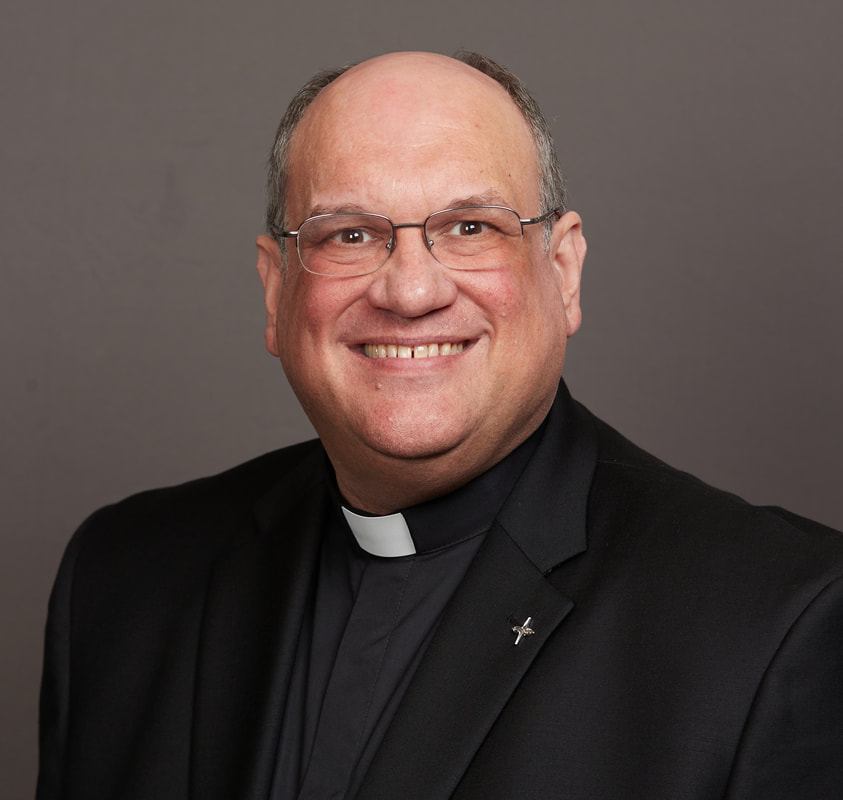
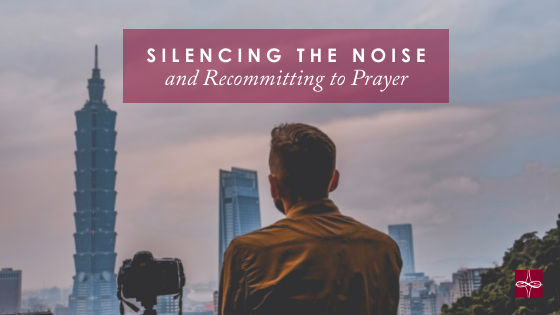



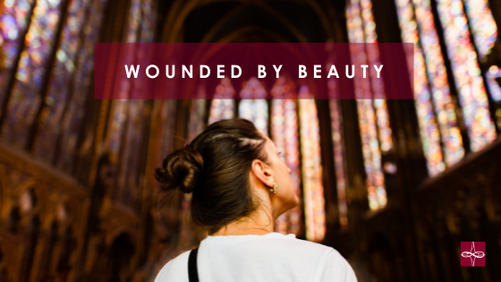
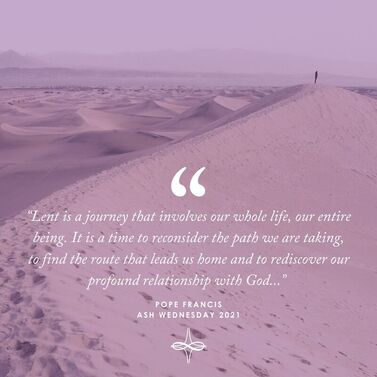
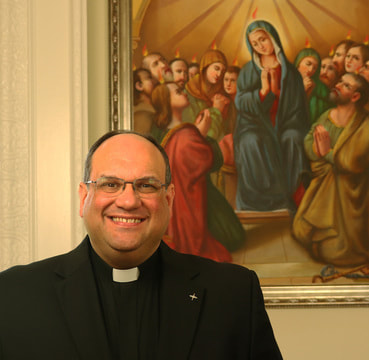
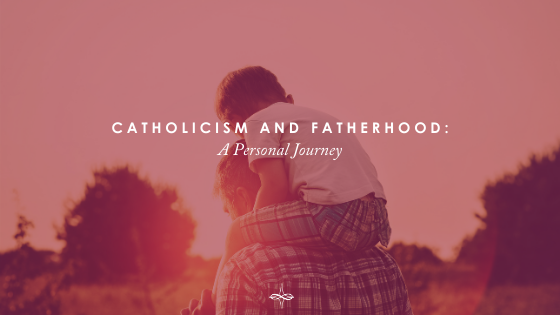
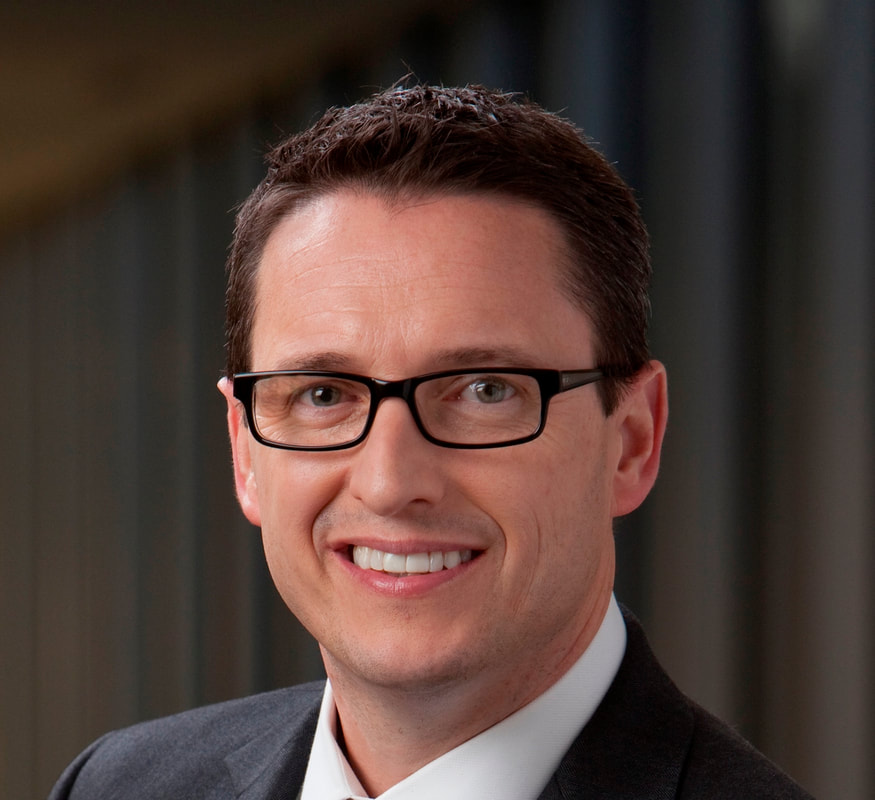
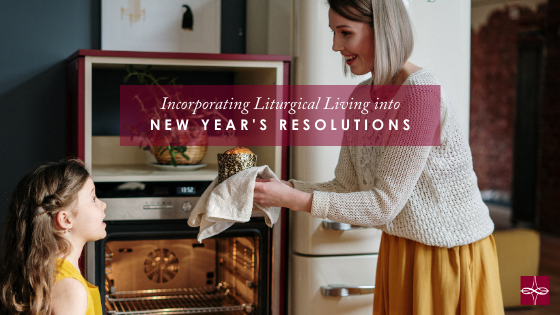

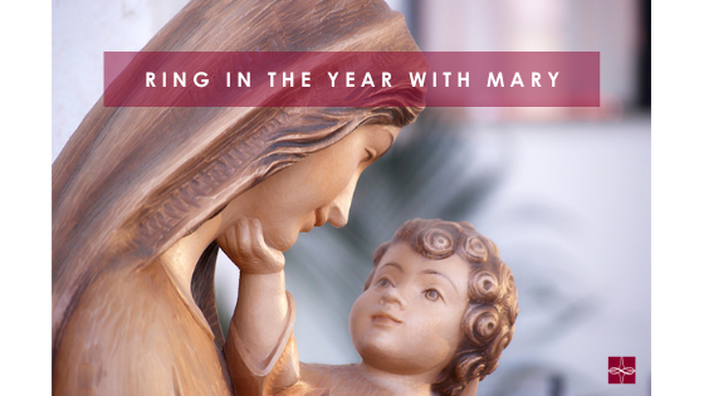
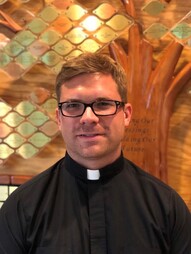
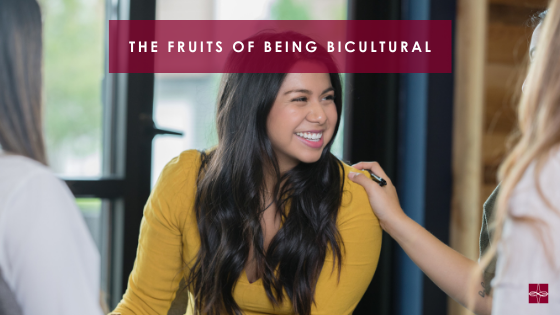
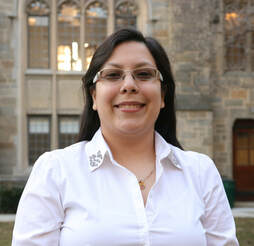
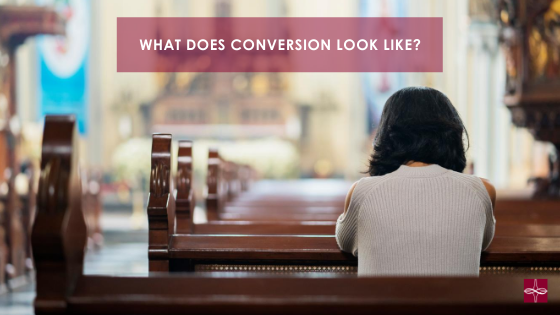
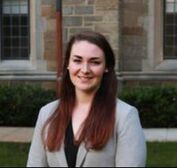
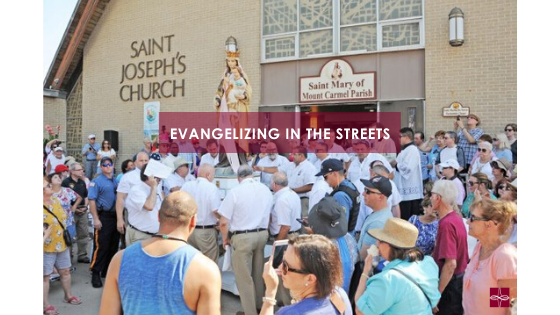
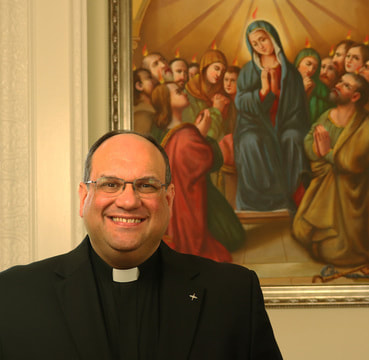
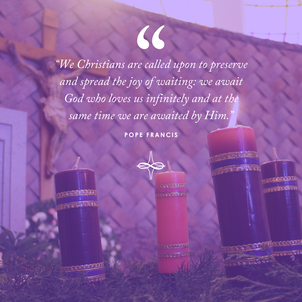
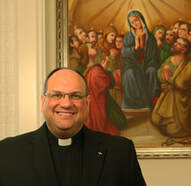

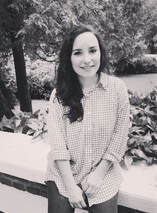
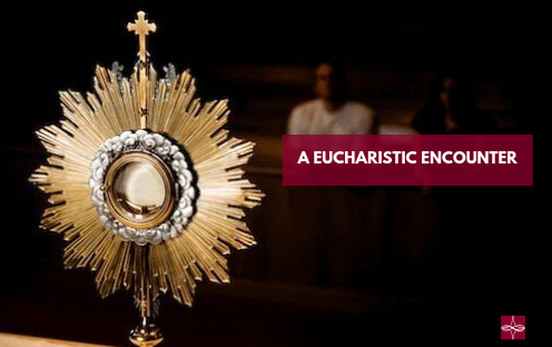
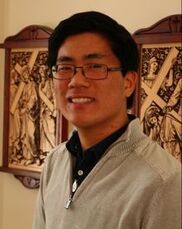


 RSS Feed
RSS Feed